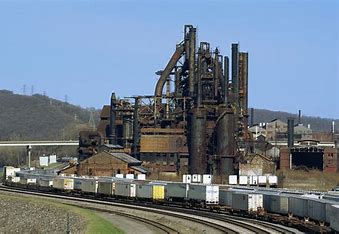The persistent human costs of deindustrialization: Lessons from the collapse of the British coal industry
Björn Brey Valeria Rueda / 1 Sep 2024- CEPR-VOXeu
Click here for the link to this full article as featured by CEPR-VOXeu
Industrial decline has been directly linked to a worsening of various social and economic indicators. This column examines how the impacts of deindustrialisation in the UK reverberate across generations, finding significant effects on the health, wealth, and living standards of those who grew up under industrial decline. The ability to migrate to wealthier parts of the country is not sufficient to offset these negative effects.
The recent decline in industrial jobs in developed and emerging countries has been linked to worsened health (Case and Deaton 2020, Case 2020), the disintegration of family ties (Autor et al. 2018), and the formation of a geography of political discontent (Autor et al. 2020, Rodríguez-Pose 2018, Rodríguez-Pose et al. 2024). Previously prosperous places are now ‘left behind’, with worse relative living standards, education, and productivity (Moretti 2022, Overman and Xu 2022). Few countries in the developed world have seen such stark increases in regional inequality as the UK, the country with the fastest deindustrialization in the developed world (Mcann 2019, Stansbury et al. 2023).
In this column, we show that deindustrialization has persistently affected living standards in the UK. Our recent research documents effects on the health, wealth, and living standards of those who grow up under industrial decline. These effects persist even if people migrate out of affected regions, and they carry over generations (Brey and Rueda 2024). Industrial decline thus not only affects those who work in endangered industries; their children and their grandchildren are also durably worse off. Moreover, the availability of better economic conditions elsewhere does not fully mitigate this impact. Deindustrialization thus directly threatens equality of opportunities for future generations.
We focus on the collapse of the British coal industry, one of the starkest cases of industrial decline in the 20th century. Economic historians have extensively written about the importance of Britain’s coal in the Industrial Revolution (e.g. Pomeranz 2000, Allen 2009, Wrigley 2010, Fernihough and O’Rourke 2021). Coal mining employed more than 700,000 people by the end of the 1950s. That number halved within a decade, following the industry’s most dramatic shrinkage post WW2 (see Figure 1). Waves of pit closures continued washing over British coal production until its virtual disappearance in the 1990s. Today, the former coalfields consistently rank among areas with the highest levels of deprivation in the country, a matter of sufficient public concern to grant the formation of an all-party parliamentary research group working on policy proposals for these regions (All-Party Parliamentary Group on Coalfield Communities 2023).



